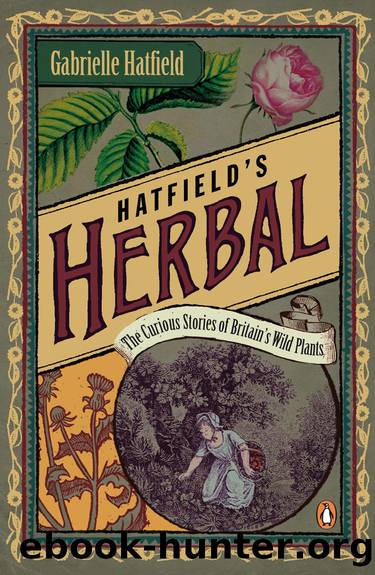Hatfield's Herbal by Gabrielle Hatfield

Author:Gabrielle Hatfield
Language: eng
Format: epub
ISBN: 9780141044750
Publisher: Penguin Books Ltd
Published: 2009-02-24T00:00:00+00:00
Great emphasis was placed on keeping the bowels open and the pores closed and of cleansing the blood after the rigours of winter, and so in the spring we were sent to gather young nettles. Nettle tea we had to drink to purify our blood, Grandpa (unwillingly) for his sciatica and Aunt Rose for her pleurisy. I wondered how it knew which it was supposed to do.
Mrs E. Mâ, Essex Age Concern essay (1991)
Nettles are excellent in the treatment of anaemia because of their high iron content, and were often used to counter the effects of heavy periods. For this they are particularly effective, since they have bloodâstaunching properties as well as being ironârich. In the manuscript notes kept by an eighteenthâcentury surgeonâapothecary in Dalkeith, there is an entry concerning a patient whose heavy periods had returned six times in three months. She was âprescribâd nettles, knowing how she dislikâd all shop medicinesâ.
Country people with arthritis and rheumatism eased the pain with nettles, an application that is now being vindicated by the discovery of antiâinflammatory polysaccharides in the plant. In a small recent trial (C. Randall et al. and J. Roy) of people who had osteoâarthritis at the base of the thumb, rubbing daily with a stinging nettle was shown to produce better pain relief than in the control group. Although it sounds heroic to beat the aching parts with stinging nettles, it does apparently bring great relief. There are still elderly people in East Anglia who practise this. It is thought that the Roman nettle ( Urtica pilulifera ) was introduced to this country for similar use by Roman troops.
The following story illustrates the importance of accurately preserving the details of how plants were used in the past. In an eighteenthâcentury book on farriery, there is a strange piece of advice to ensure a horse becomes pregnant. It claims that the mare should be beaten with nettles before the stallion arrives. I mentioned this to a Norfolk horseman who had spent sixty years with shire horses, leading a stallion around from farm to farm, often sleeping with it at night. He looked at me with disbelief, and then his face cracked into a smile and he laughed with sheer delight at the stupidity of such learned authors.
âThey books, they get it ALL wrong. You beat the mare AFTER the stallion has been!â
Of course this makes much more sense, since the stinging nettle would make the mareâs hindquarters contract.
There are numerous other folk medical applications for nettles. They have been used for nosebleeds, and the juice to treat burns and rashes and as a gargle. The juice has even been dripped into the ear for earache and, in the eighteenth century, a concoction of chopped nettles and egg white was applied to the temples to cure insomnia. Nettles have even had a role in slimming. An anonymous twentiethâcentury pamphlet tells us that âtwenty to thirty crushed nettle seeds taken night and morning, is the best remedy for stout people, which will prevent burdensome fat surrounding the kidneys.
Download
This site does not store any files on its server. We only index and link to content provided by other sites. Please contact the content providers to delete copyright contents if any and email us, we'll remove relevant links or contents immediately.
Turbulence by E. J. Noyes(7059)
The Thirst by Nesbo Jo(5795)
Gerald's Game by Stephen King(3928)
Be in a Treehouse by Pete Nelson(3234)
Marijuana Grower's Handbook by Ed Rosenthal(3126)
The Sprouting Book by Ann Wigmore(3057)
The Red Files by Lee Winter(2923)
The Remains of the Day by Kazuo Ishiguro(2627)
Sharp Objects: A Novel by Gillian Flynn(2452)
Christian (The Protectors Book 1) by L. Ann Marie(2396)
Organic Mushroom Farming and Mycoremediation by Tradd Cotter(2314)
The Culinary Herbal by Susan Belsinger(2063)
Stone Building by Kevin Gardner(1998)
The Starter Garden Handbook by Alice Mary Alvrez(1930)
Lilac Girls by Martha Hall Kelly(1883)
The Unlikely Pilgrimage of Harold Fry by Rachel Joyce(1838)
The Lean Farm Guide to Growing Vegetables: More In-Depth Lean Techniques for Efficient Organic Production by Ben Hartman(1789)
Urban Farming by Thomas Fox(1752)
Backyard Woodland by Josh VanBrakle(1591)
